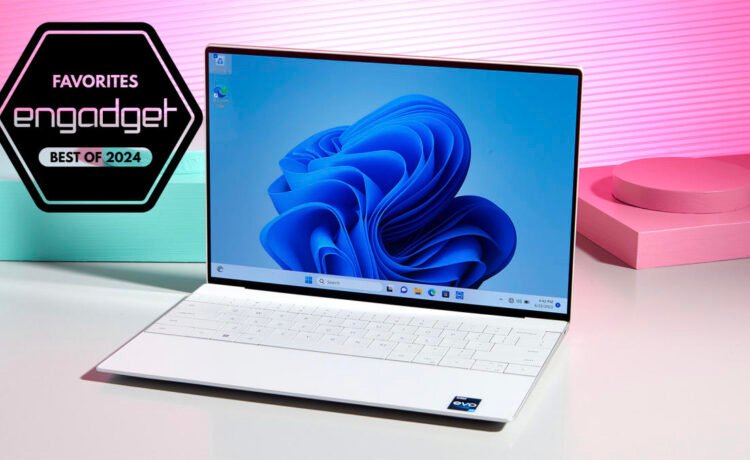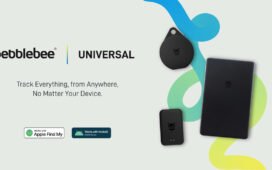With the possible exception of a phone, a laptop is unquestionably a college student’s most important gadget. It will be used to take notes in class, write essays, create presentations and maybe even game a little. (But only after all your homework is done, right?) That’s why it’s critical to pick a laptop that can support the work you’re trying to do while also being thin, light and long-lasting. After all, a laptop isn’t very useful if it’s too big to lug around or if it dies instantly whenever it isn’t plugged into the wall. So to help figure out which options are right for you, we’ve put together a list of our favorite laptops for college across a range of OSes, prices and use cases.
What to consider in your next laptop for college
Before we get into specific recommendations, it’s important to consider your major and what you need your laptop to do. For example, if you’re a liberal arts major and will mostly be writing or making presentations, you don’t need an expensive system with a discrete GPU. Alternatively, if you’re a film major who might need to render videos on a regular basis, having a beefy PC can significantly reduce the time it takes to finish a project. You’ll also want to take a look at any guidelines provided by your college or your specific program, as you may need required software or apps that only run on a specific OS.
Some other things to consider are if you want a more portable 13 or 14-inch machine that’s easier to carry around, or if you prefer something with a larger screen. On top of that, if you are doing tasks like photo or video editing, you’ll probably want to go for a system with a high-resolution display (1440p or 4K), so it’s easier to see details. As for other specs, ideally you’ll want 16GB of RAM (though you can go down to 8GB on a Chromebook) and at least 512GB or 1TB of storage.
Finally, while your budget ultimately will determine how powerful of a laptop you can get, well-equipped ultraportables will generally cost between $1,000 and $1,400, with prices going up from there for systems with discrete GPUs. Budget Windows laptops and Chromebooks can be affordable alternatives though, with many going for just $500 to $700. But again, remember to check your school’s requirements because it’s not worth saving a few bucks only to find out that your notebook can’t run the app you need for all your homework.
See Also:
A word on Microsoft’s new Copilot+ PCs
We have really enjoyed using the new Surface Pro and Surface Laptop 7. They’re fast, quiet and support a huge range of both native Arm apps and traditional x86 software. However, there are a few major productivity apps that still have not been updated to work on the Qualcomm Snapdragon X Elite and X Plus chips used in the recent wave of Copilot+ PCs. Some of the most notable ones are Adobe’s Illustrator and InDesign (which won’t be available until sometime in July), and After Effects and Premier Pro, which aren’t expected to arrive until later in 2024. And given the number of college students who may need a PC to edit videos, draw or create layouts with these apps, that makes it difficult to give them whole-hearted recommendations in this guide right now. However, if you’re sure the apps you need for your course or major are supported, it may be worth giving these new Copilot+ PCs a closer look.
The best laptops for college students
Read our full Apple MacBook Air M3 review
It’s hard to beat Apple’s MacBook Air if you want a powerful machine for college that won’t weigh you down. You have a few good options this year — the 13-inch or 15-inch MacBook Air M3 and the MacBook Air M2. The M3 laptop earned a score of 90 from us for its impressive performance, gorgeous 13.6-inch Liquid Retina display and its thin-and-light design. However, the M2 remains a fantastic machine and, with the launch of the M3 models, it received a $200 price cut. We recommend springing for an M3 Air if you want a more future-proof laptop, but the MacBook Air M2 will likely be enough for most students’s needs.
Apple has officially stopped selling the M1 MacBook Air in its online store, but it’s still floating around the internet for under $1,000. It has the wedge design of older MacBook Airs, larger bezels and only a 720p webcam. But if you’re coming from an Intel machine, the performance gains will be noticeable even if you pick up an M1 machine on clearance. However, we expect stock to become limited as the year goes on.
Read our full Dell XPS 13 review
The best PC has long been Dell’s well-rounded XPS 13 series and I still recommend it to anyone that doesn’t want a Mac. Yes, the latest XPS 13 lacks a headphone jack, and some of its buttons are hard to see and use. But it’s a well-rounded machine and reliable workhorse that will get you through classes and late-night writing sessions without breaking a sweat.
The XPS 13 (previously called the XPS 13 Plus) offers a solid balance of speed and attractive-yet-minimalist design. This year, it’s powered by a new Core Ultra 7 processor, which makes it an “AI PC.” Thanks to a built-in NPU (neural processing unit), it can handle a few AI tasks, like Windows Studio Effects for video chats, without taxing your CPU or battery life. But it also has everything we previously liked about the XPS 13 Plus: An edge-to-edge keyboard with lusciously large keys, along with a huge “invisible” trackpad nestled within its glass wrist rest. And of course, it features a nearly border-less “Infinity Edge” screen, which has been a mainstay of the XPS line for almost a decade.
When it first debuted, the XPS 13 Plus was a more powerful alternative to Dell’s thinner and weaker XPS 13. While we’ll miss the previous XPS (which you can still find refurbished), it makes sense for Dell to lean into its stunning new aesthetic. The 2024 XPS 13 Plus looks more refined than the vast majority of Windows ultraportables, and like the Infinity Edge display, it raises the bar for what other PC makers should emulate.
Read our full ASUS ROG Zephyrus G14 review
For the student who wants a laptop that’s light enough to carry to class but powerful enough to edit videos or play games at night, ASUS’ ROG Zephyrus G14 offers an incredible combination of performance and portability. It features a gorgeous 120Hz OLED display, an AMD Ryzen 9 chip and up to NVIDIA RTX 4070 graphics, which is more than enough to handle almost anything you can throw at it. The 2024 model also sports a more sophisticated design with a single row of white LEDs across its lid instead of a bunch of RGB lights, a ton of ports (including a full-size HDMI jack and microSD slot) and better-than-average battery life. All of this comes in an unibody aluminum chassis that weighs just 3.3 pounds, which is the same as a 15-inch MacBook Air. Put simply, the ROG G14 is one of the best laptops we’ve reviewed this year, period, which makes it a great choice for students that are dabbling in a bunch of different subjects or disciplines. Also, if you like the G14’s mix of performance and design but want something a touch larger, there’s the ROG Zephyrus G16 which supports up to an RTX 4090 GPU. — Sam Rutherford, Senior Reporter, Reviews
Chromebooks may have started out as inexpensive PCs for early education, but they’ve matured a lot over the years. Recently, with the introduction of Google’s Chromebook Plus designation, you can now get a number of handy AI-powered features alongside improvements such as faster wake times, 1080p webcams and better battery life. Out of all the models on the market, Acer’s Chromebook Plus Spin 714 is one of the few that supports a speedier Intel Core Ultra 5 chip with 8GB of RAM and 256GB of base storage (which is twice as much as many of its rivals). Meanwhile, thanks to its 360-degree hinge, you can use it as a standard clamshell or a tablet depending on the situation. Finally, with a starting price of $700, it’s more affordable than a typical Windows or Mac-based alternative. — S.R.
Read our full HP Pavilion Aero 13 review
If you’re looking for a sturdy student laptop under $800, your best bet is the HP Pavilion Aero 13. Yes, it’s almost two years old, but it’s still one of the best cheap laptops for college students available now. For an affordable price, you’ll get a Full HD screen with a 16:10 aspect ratio and surprisingly thin bezels, as well as a comfortable keyboard and spacious touchpad. Importantly, the Aero 13 provides relatively powerful components compared to others in this price range, with an AMD Ryzen 5000 series processor and Radeon graphics. Plus, it has a generous array of ports and enough hours of battery life to last you a full day and then some.















